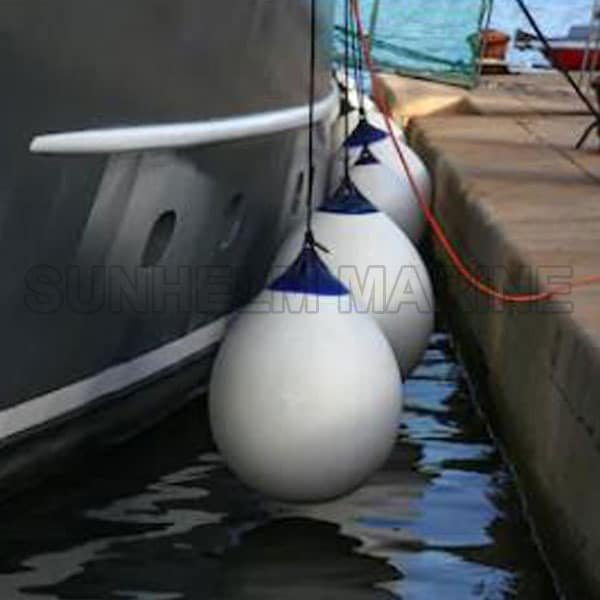Introduction
When it comes to protecting boats, traditional plastic or foam fenders have been the norm for a long time. But lately, more people have started using inflatable boat fenders. They are light and save space, but can they really replace traditional fenders? In this article, I’ll break down the pros and cons, share real test results, and user feedback to help you decide if inflatable fenders are right for you.

What Are Inflatable Boat Fenders?
Inflatable boat fenders are made from strong materials like PVC, TPU, or Hypalon. You fill them with air to create a soft cushion between your boat and docks or other boats. They come in different shapes like balls, columns, or flat pads. Unlike hard plastic or foam fenders, inflatable ones can be deflated and folded for easy storage.
Advantages
1. Very Lightweight and Easy to Handle
Inflatable fenders weigh much less than traditional ones. That makes moving, hanging, or adjusting them simple—even one person can do it easily. Many boaters say they feel so light, even kids or older adults can manage them without help.
2. Saves Storage Space
When deflated, inflatable fenders fold down to a tiny size. This is great if your boat has limited storage space. You can keep several fenders without taking up much room.
3. Great at Absorbing Impact
Because they are soft and full of air, inflatable fenders spread out the force better than hard fenders. This means they protect your boat well from bumps and scrapes.
4. Flexible for Many Situations
You can use inflatable fenders as backup or emergency bumpers. They work well when you dock temporarily or tie up alongside other boats. Some models even let you connect several fenders together to cover a bigger area.
5. Good Quality Materials and Custom Options
Top brands use strong military-grade materials with UV protection. They also offer different colors and covers to match your boat’s style and protect the fender from sun damage.
Downsides and Things to Watch Out For
1. Can Be Punctured by Sharp Objects
While inflatable fenders are tougher than many think, sharp rocks or hooks can still damage them. It’s smart to use protective covers and check them regularly.
2. Can Move or Float Away in Strong Wind or Waves
Because they are light, inflatable fenders might roll or drift if not tied down or weighted. Make sure to secure them well.
3. Sunlight Can Wear Them Out Over Time
Materials like PVC can get brittle and crack if left in direct sun for too long. Use UV covers and clean your fenders often to keep them lasting longer.
4. Usually More Expensive at First
Good inflatable fenders cost more upfront than foam or plastic ones. But their long life and ease of use often make them worth the price.
Real Tests and User Reviews
Tests by Practical Sailor recommend the Sunhelm inflatable fenders as a top choice. They are tough and reasonably priced.
Boat owners share stories like:
“I’ve used these fenders for two years, and I love them. They are easy to move even for kids and older people.”
“A tractor even ran over one of my inflatable fenders, and it didn’t burst!”
These fenders hold up well in real-world use.
How to Use and Care for Inflatable Fenders
- Inflate to the Right Pressure
Keep the air pressure around 2 to 2.5 PSI. This keeps the fender firm but soft enough to absorb bumps. - Tie or Weight Them Down
In windy or rough water, secure your fenders so they don’t drift away. - Protect from Sun and Clean Often
Rinse with fresh water after use, clean gently with mild soap, and apply UV protectant regularly. - Check for Leaks or Damage
Inspect valves and seams regularly. Patch small holes quickly to avoid bigger problems.
Conclusion
Inflatable boat fenders have many benefits. They are light, easy to use, save storage space, and protect your boat well. But you should watch for sharp objects, keep them tied down, and protect them from sun damage. They are a great choice for small boat owners, people who move a lot, or those with limited storage. If you pick a good brand and take care of your fenders, they will last and make boating easier.


